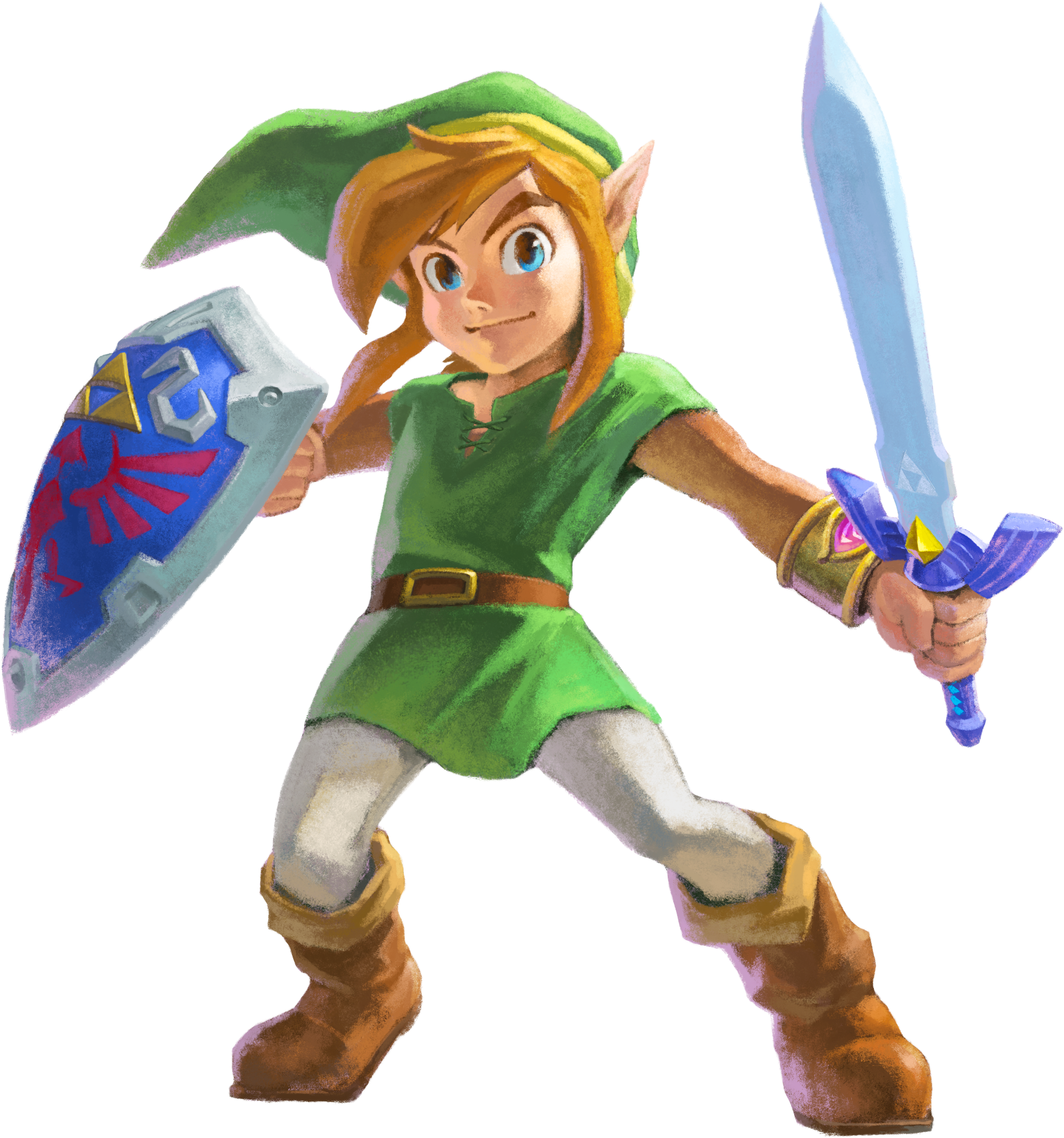Bringing a furry friend into your life is a joyful experience, isn't it? As pet parents, we always want what's best for our companions, especially when it comes to their safety and well-being. A good collar is a big part of that, helping us keep our pups secure and communicate with them effectively during walks and training. So, let's talk about the link dog collar, a type of collar that often sparks curiosity among dog owners.
You might have heard different things about these collars, and that's okay. Our goal here is to give you a clear picture of what a link dog collar is, how it works, and if it might be a good fit for your dog's needs. We'll explore its features, how it helps with training, and what you should think about before choosing one. Basically, we'll try to make sense of it all for you.
Just like the idea of 'link' implies connection, whether it's linking payments for ease and security, or linking up with friends online, a link dog collar aims to create a clearer connection between you and your dog. It's about finding that way to communicate effectively, ensuring walks are pleasant and training is productive. We'll explore how this type of collar, made of interconnected parts, helps establish that important line of communication, allowing you to guide your dog with a gentle touch. So, in a way, it's about building a better bond.
- Bonnaroo 2003 Lineup
- The Recruit Filming Locations
- Patti Labelle Brooklyn
- Mary Kay Makeup Remover Dupe
- Pco Air Purifier
Table of Contents
- What Exactly is a Link Dog Collar?
- Why Consider a Link Dog Collar for Your Dog?
- Picking the Right Link Dog Collar for Your Pup
- How to Use a Link Dog Collar Safely and Nicely
- Clearing Up Common Misconceptions
- Caring for Your Link Dog Collar
- Frequently Asked Questions About Link Dog Collars
- Final Thoughts on Link Collars
What Exactly is a Link Dog Collar?
A link dog collar, at its core, is a collar made up of several interconnected pieces. These pieces, often metal, form a chain-like structure. They are quite different from your typical flat buckle collar or a harness. The design allows for a particular kind of interaction with your dog, especially during training moments. It's a tool, really, that helps convey your wishes clearly.
There are a few variations of these collars, each with its own specific design. Some are simple chain loops, while others have blunt prongs that sit against the dog's neck. The idea behind them is to provide a consistent, clear signal to your dog when they pull or need a gentle correction. It's about communication, you know, helping your dog understand what you want them to do.
These collars have been around for quite some time in the world of dog training. They're not a new invention, but their use and understanding have certainly evolved. Many professional trainers use them, particularly for dogs who need a bit more help with leash manners. They can be very effective when used properly, and that's a big part of what we want to talk about today.
- Emma Corrica Heath Ledger
- Jordan Knight Evelyn Melendez
- Paula Deen Dishes
- Who Sells Sandpiper Jeans
- Blumene Hair Pro
Why Consider a Link Dog Collar for Your Dog?
You might be wondering why someone would choose a link dog collar over other types. Well, they offer some unique benefits, especially for training. For dogs who pull a lot on the leash, these collars can provide a clearer signal than a regular collar. This can help prevent you from being dragged down the street, which is pretty nice, honestly.
One of the main advantages is the immediate feedback they provide. When your dog pulls, the collar applies a bit of pressure, which eases when they stop pulling. This instant consequence helps your dog connect their action (pulling) with the feeling (pressure). It's a simple cause-and-effect, and dogs often pick up on it quickly. This kind of clear signal can make training sessions more productive, and that's something many pet parents really appreciate.
For dogs that are particularly strong or easily distracted, a link collar can offer better control. It's not about hurting them, but about getting their attention in a way they understand. This means you can guide them more effectively through busy environments or during new training exercises. So, in some respects, it's about safety for both of you.
Furthermore, these collars can be quite durable. Made often from metal, they stand up well to regular use and different weather conditions. This means you won't have to replace them as often as some fabric collars. They are, you know, built to last, which is a practical consideration for any dog owner.
Picking the Right Link Dog Collar for Your Pup
Selecting the right link dog collar is pretty important for your dog's comfort and for the collar's effectiveness. It's not a one-size-fits-all situation. You'll want to think about your dog's size, their breed, and their specific training needs. A good fit is absolutely key here, as a collar that's too loose or too tight won't work as intended and could even be uncomfortable.
First, consider the material. Most link collars are made from various metals like stainless steel, chrome-plated steel, or even brass. Each has its own benefits, like resistance to rust or a particular look. Stainless steel, for instance, is often a good choice because it's strong and doesn't usually cause skin irritation. You want something that will be kind to your dog's skin, don't you?
Next, think about the link size. The size of the individual links on the collar matters a lot. For smaller dogs, you'll want smaller, lighter links. Larger dogs, with their stronger necks, will need bigger, more robust links to provide proper communication. Getting this wrong can make the collar less effective or even too harsh. So, it's about matching the collar to the dog, pretty much.
Finally, make sure to measure your dog's neck carefully. You want the collar to sit high on their neck, just behind their ears, and be snug enough that it won't slip off, but not so tight that it pinches. A good rule of thumb is to be able to fit one or two fingers comfortably between the collar and your dog's neck. This ensures it can do its job without causing distress. This is, you know, super important for their comfort and safety.
How to Use a Link Dog Collar Safely and Nicely
Using a link dog collar properly is absolutely essential for it to be a helpful training tool and not a source of discomfort. It's not meant for constant wear, but rather for supervised training sessions and walks. The goal is to teach, not to punish. So, let's talk about how to get it right, okay?
Always put the collar on correctly. For most link collars, you'll want it to form a "P" shape when you attach the leash. This allows it to loosen and tighten smoothly. If it's on upside down, it won't release properly, which can be quite frustrating for your dog and for you. It's a simple thing, but it makes a big difference.
The key to using a link collar is gentle, quick corrections. When your dog pulls or does something you want to correct, give a quick, firm tug on the leash and then immediately release the pressure. This is often called a "pop and release." The pressure should be momentary, just enough to get their attention, and then it's gone. This teaches them that releasing the pressure is tied to stopping the unwanted behavior. It's really about clear communication, you know?
Never leave a link collar on your dog unsupervised. They can get caught on things, leading to serious injury or worse. These collars are specifically for active training and walking sessions. When you're done, take it off. It's a tool for specific times, not an everyday accessory. This is a safety rule that's pretty much non-negotiable.
Consider working with a professional dog trainer, especially if you're new to using a link collar. A good trainer can show you how to fit it correctly and how to use it with proper timing and technique. They can help you learn to communicate effectively with your dog, making the process much smoother and more positive for both of you. It's an investment in your relationship, really.
Clearing Up Common Misconceptions
There are quite a few misunderstandings floating around about link dog collars. Some people worry they are inherently cruel or harmful, but that's not necessarily the case when used correctly. Like any tool, their effectiveness and safety depend entirely on the person using them. A hammer can build a house or cause damage, right? It's similar here, in a way.
One common myth is that these collars choke dogs. While some are called "choke chains," a properly fitted and used link collar doesn't continuously choke a dog. The design allows for a quick tightening and loosening action. The pressure is meant to be a brief signal, not sustained strangulation. If a dog is constantly choking, the collar is either fitted incorrectly or being used improperly. So, it's about understanding the mechanics, you know.
Another misconception is that they cause pain. While they apply pressure, the goal is not to inflict pain but to create a noticeable sensation. When used correctly, the pressure is similar to a mother dog correcting her pup, or a firm hand on your shoulder. It's about getting attention and communicating boundaries, not causing suffering. It's a subtle distinction, but a very important one.
Some believe that using a link collar means you don't love your dog enough to use positive reinforcement. This isn't true at all. Many trainers use a combination of tools and methods, including positive reinforcement, alongside a link collar for specific behavioral issues. It's about finding what works best for an individual dog and handler team. Every dog is different, after all, and what works for one might not work for another.
Finally, there's the idea that these collars are only for aggressive dogs. That's simply not accurate. Many well-behaved dogs, or dogs with minor leash manners issues, can benefit from the clear communication a link collar provides. They are training tools for a range of dogs and situations, not just for extreme cases. They can be pretty versatile, honestly.
Caring for Your Link Dog Collar
Just like any piece of equipment, your link dog collar will last longer and work better if you take good care of it. Regular cleaning and inspection are pretty important. This ensures it remains safe and effective for your dog. A well-maintained collar is a happy collar, you know?
For metal collars, you can usually clean them with warm, soapy water. Just make sure to rinse them thoroughly and dry them completely to prevent rust, especially if they are not stainless steel. A little bit of attention after a muddy walk can go a long way in keeping it in good shape. It's a small task, but it helps a lot.
Regularly check the links for any signs of wear, bending, or breakage. If a link looks weak or damaged, it's time to replace the collar. A broken link could cause the collar to fail at a critical moment, which you definitely want to avoid. Safety first, always, right?
Store your link collar in a dry place when not in use. Don't just toss it in a wet pile of gear. Proper storage helps prevent rust and keeps the collar in good working order for a long time. It's a simple habit that makes a big difference in the lifespan of your collar. So, keep it neat, basically.
Frequently Asked Questions About Link Dog Collars
Are link dog collars suitable for all dog breeds?
Not necessarily. While many breeds can use them, the suitability often depends more on the individual dog's temperament and training needs than just their breed. Small, delicate dogs might need very fine links, while larger, stronger dogs need more substantial ones. It really comes down to a good fit and proper use, you know.
How do I know if a link dog collar is the right size for my dog?
The collar should fit snugly high on your dog's neck, just behind their ears, without being too tight. You should be able to comfortably slip one or two fingers between the collar and your dog's neck. If it's too loose, it can slip off or sit too low, which isn't good. If it's too tight, that's not comfortable at all. It's a bit like finding the right shoe size, really.
Can I leave a link dog collar on my dog all the time?
No, you really shouldn't. Link dog collars are training tools and are meant for supervised use during walks or training sessions. Leaving them on unsupervised can lead to serious hazards, like getting caught on objects or other dogs, potentially causing injury. Always take it off when training or walks are done. This is a very important safety rule, honestly.
Final Thoughts on Link Collars
The link dog collar, much like an interchangeable system that lets you design and link different parts, is a tool with interconnected pieces designed to help you communicate with your dog. It's a device that, when used thoughtfully, can really help with leash manners and training. Just like Link the character connects different parts of a grand adventure, this collar can help link your commands to your dog's understanding. It’s all about creating that clear line of communication, which is, you know, pretty vital for a happy life together.
Remember, choosing any training tool for your dog should always involve careful thought and, ideally, advice from a good professional trainer. They can guide you on whether a link collar is the right choice for your particular pup and how to use it kindly and effectively. Learning more about dog training methods on our site can also help you make informed decisions. Also, consider exploring different types of dog collars to find the perfect fit for your canine companion. It’s about building a better relationship with your dog, one clear connection at a time, isn't it?
For more detailed information on responsible dog ownership and training tools, you can always check out resources from reputable animal welfare organizations. For example, the ASPCA offers great insights into dog training and behavior, which is a good place to start your research.
Related Resources:



Detail Author:
- Name : Mireya Howe
- Username : keeling.monty
- Email : wisozk.julianne@blanda.net
- Birthdate : 1985-12-12
- Address : 8309 Mozelle Unions Apt. 383 East Moisesshire, AZ 52396-8306
- Phone : 484.557.1259
- Company : Heaney Group
- Job : Meter Mechanic
- Bio : Tempora illum ipsa nihil rerum quae nesciunt. Iure explicabo vel commodi. Quod laborum in voluptas earum magnam sed. Delectus culpa tempore et rerum.
Socials
twitter:
- url : https://twitter.com/thurmanbauch
- username : thurmanbauch
- bio : Sit reiciendis quisquam ab ut sed. Facilis doloremque fugiat non vel fuga facere.
- followers : 5405
- following : 2446
instagram:
- url : https://instagram.com/thurman_id
- username : thurman_id
- bio : Sapiente eligendi ratione quam sunt debitis. Consequuntur est dolorem qui officia aspernatur sunt.
- followers : 1297
- following : 35
facebook:
- url : https://facebook.com/thurman_real
- username : thurman_real
- bio : Dolorem consequatur unde et officiis non perferendis.
- followers : 2162
- following : 2452
linkedin:
- url : https://linkedin.com/in/thurman.bauch
- username : thurman.bauch
- bio : Qui consectetur rem odio doloremque sapiente et.
- followers : 2477
- following : 934